Black and red ants are common all across the world. In the US, black and red ants are found in Southeastern territories and Southwestern territories in high numbers.
Multiple species of ants have red and black colors. Red can sometimes have a brown, yellow, or orange undertone.
These ants can sometimes sting. Most black and red stinging ants are known for a painful sting.
It’s best to prevent touching these ants since these ants can sometimes live in colonies of up to a few thousand ants.
Bicolored red and black ants can be a forager. They can gather fruit and other foods to take back to the nest.
They can also eat insects. Some black and red ants have even been known for eating dead insects.
The following ants have a red and black color and are native or are found in the US.
Table of Contents
1. Shiny Acrobat Ant
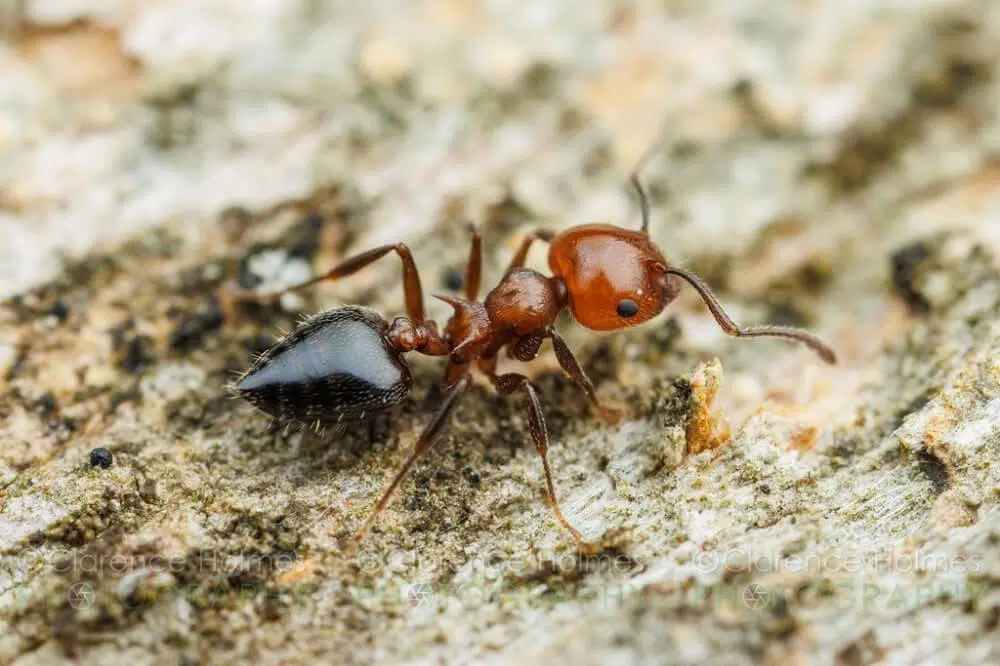
Dark red color with a black gaster makes Shiny Acrobat ants (Crematogaster laeviuscula) stand out from other species.
These types of ants are native to the US and are found next to salt marshes in Florida. The highest population of Shiny Acrobat ants is found next to the North Florida Gulf Coast.
Ants of this genus have very high coloring variation.
If Florida populations have a bicolored body, these ants can also come in yellow color or even black color.
One characteristic of these various morphs is their shiny look. This glossy exterior makes these ants stand out in their natural habitat, riparian forests.
2. California Harvester Ant
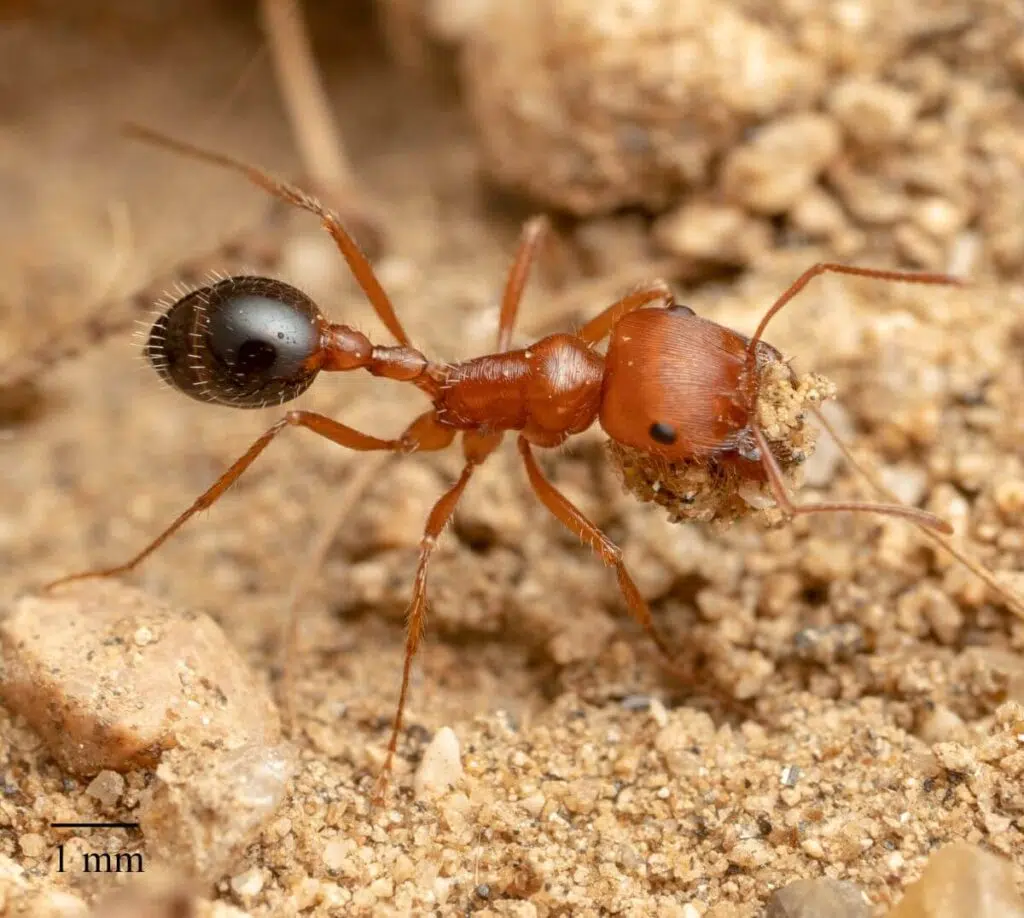
The California Harvester ant (Pogonomyrmex californicus) is one of the most common species in the Southeastern US.
This ant species has red and black coloring and a shiny body. It’s found in high numbers in deserts such as the Mojave and Sonoran Deserts.
These ants are some of the oldest native species in California even found in the culture of native Americans.
The species is known to live social lives under the guidance of one or even multiple queens.
3. American Carpenter Ant
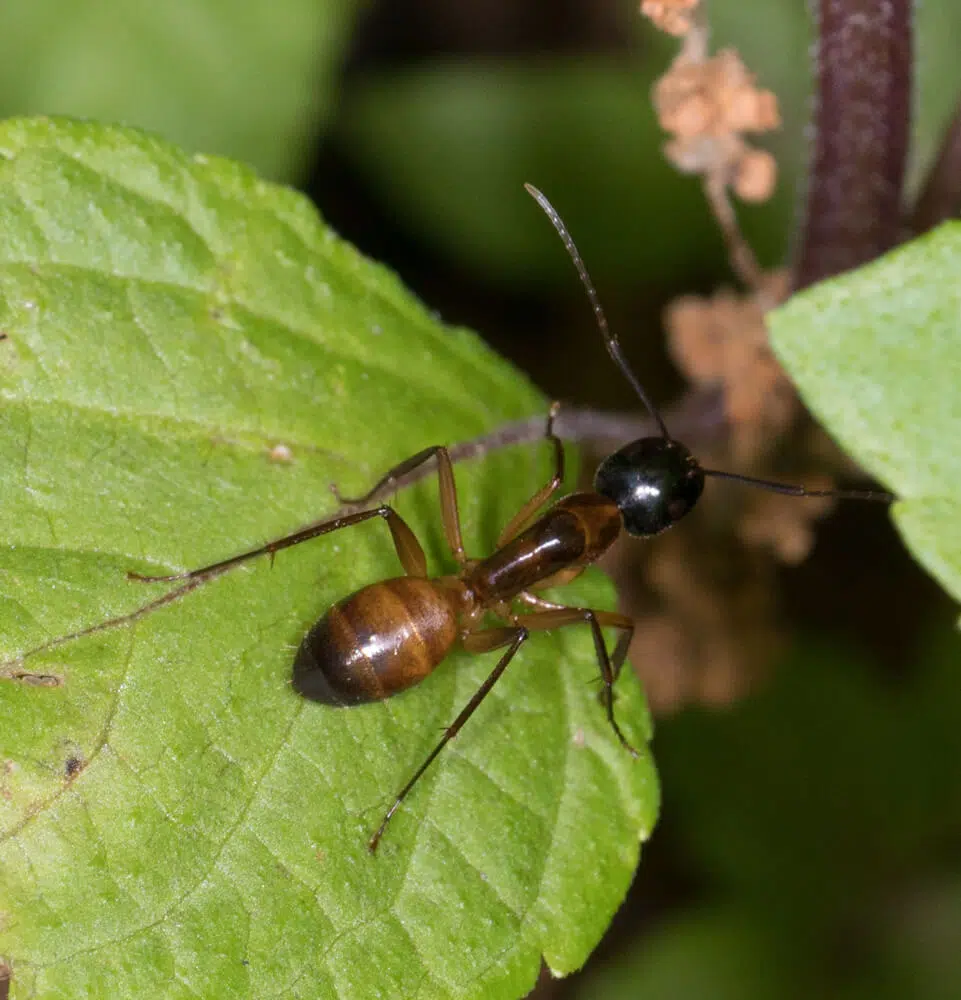
These native species (Camponotus americanus) grow from 2 to 10mm.
It has a red body with a dark red on the black head and rear abdomen.
These ants nest in wood, similar to termites. However, American Carpenter ants do not eat wood as termites do.
They excavate wood to make way for their nests and they eliminate chewed wood in a form similar to sawdust just outside the nest.
American Carpenter ant nests can be identified on trees, logs, and homes by this sawdust formation.
While their role can be detrimental to homes, these ants also have beneficial roles in nature. For example, they have a positive role in helping wood decompose in woodlands.
4. Western Thatching Ant
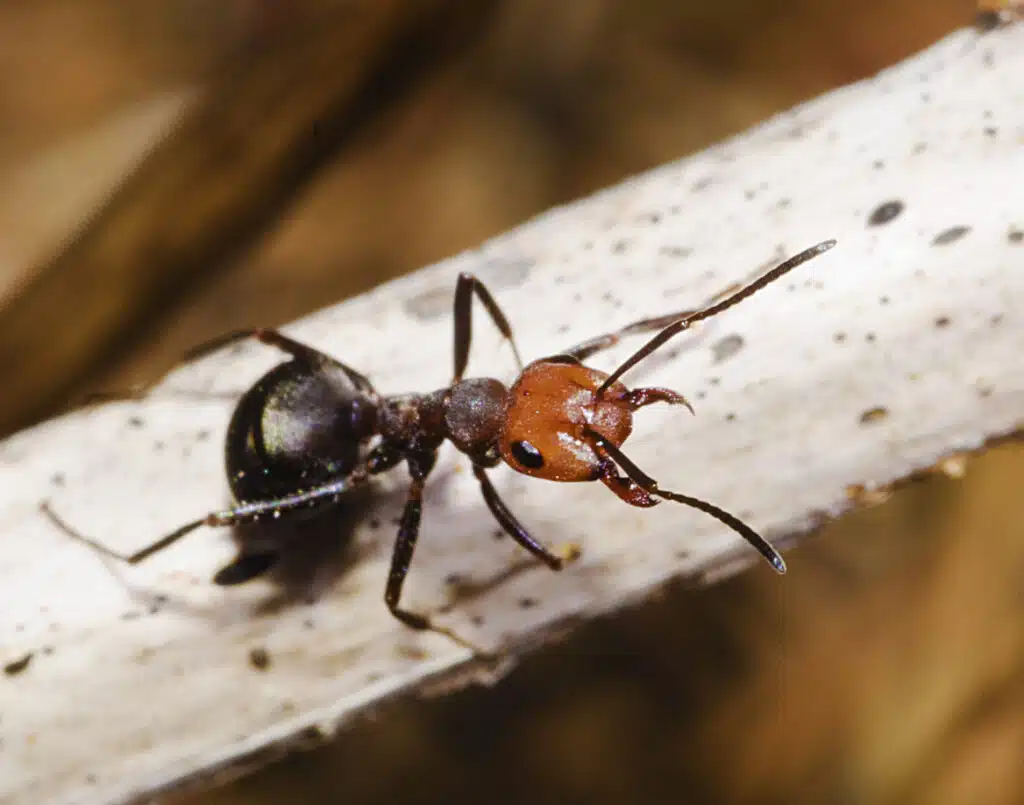
Western Thatching ants (Formica obscuripes) have a bicolored body. The main color is red-brown while the secondary color is dark red or black.
Ants of this genus are common and they can be spotted living together in very large colonies.
They nest in large soil formations known as ant mounds. These dome-shaped earth structures are the place where they gather food and vegetation.
The higher the mound the more the ants work to keep it alive and the larger the colony.
A mound without a clear dome shape or that is quite small is an indication that the Western Thatching ant colony is dying.
5. Compact Carpenter Ant
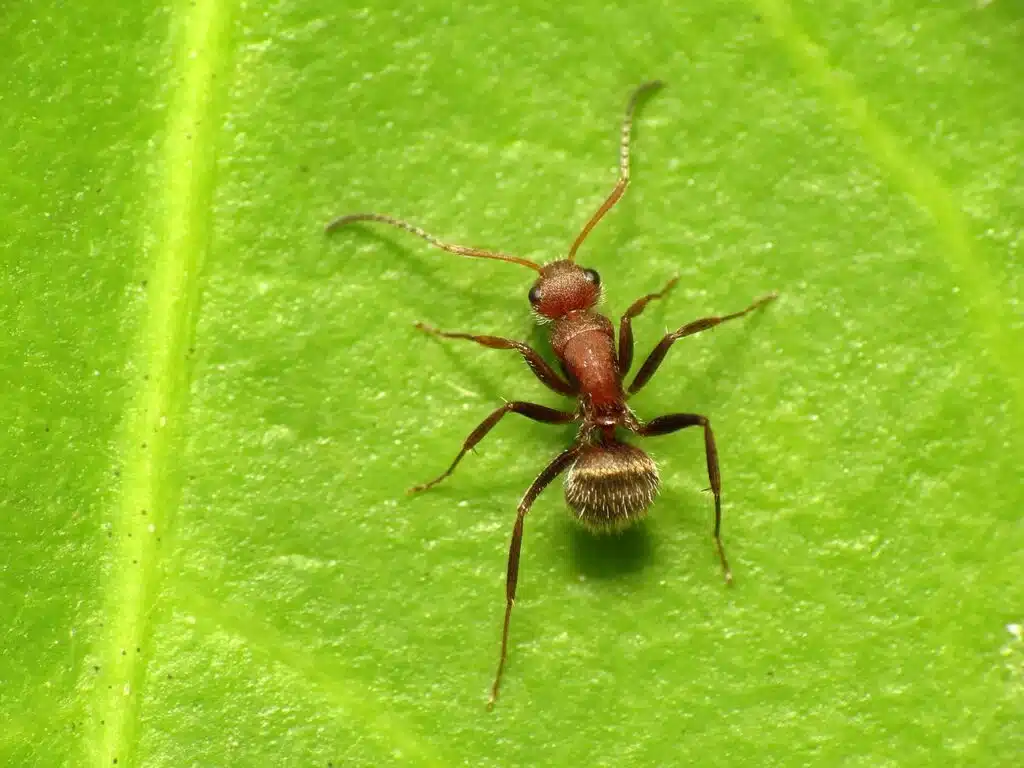
The Compact Carpenter ant (Camponotus planatus) can have a brown or red body and a dark brown or black gaster.
An adult Compact Carpenter ant grows to a size between 3 and 6mm.
These ants are sometimes found in homes, but they aren’t considered a major pest as they do not excavate wood similarly to termites.
They might move into old termite galleries, but they don’t eat wood.
Compact Carpenter ants are dealt with using typical ant and insect spray.
They are killed and eliminated by homes when their scent trails are sprayed and when you spray their nest directly.
Multiple ant nests might be found around the house and they need to be sprayed as well, even those on rotting wood in the garden.
6. Bicolored Carpenter Ant
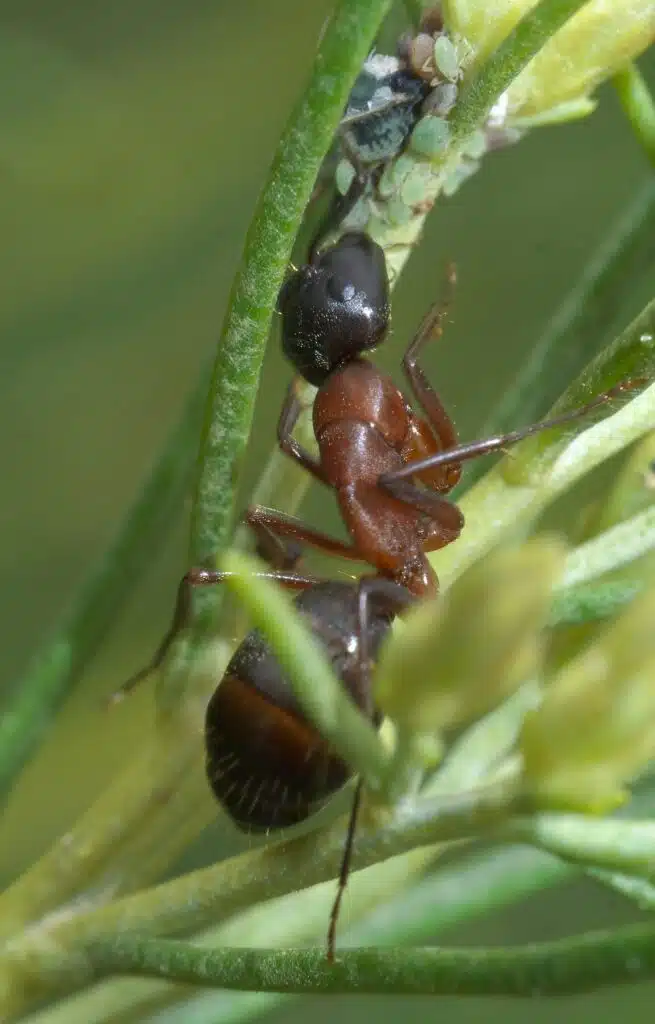
The Bicolored Carpenter ant (Camponotus vicinus) has a dark red and black body. The head and the gaster are black while the mesosoma is dark red.
There are tiny bright hairs on the gaster which may vary in number depending on the location of the ant.
Carpenter ants of this genus are very common in oak forests in North America and other types of forests in Central America.
Ants of this genus nest in wood but their nests expand far underground.
As a result, many Bicolored Carpenter ants are only found under rocks, in the proximity of wood, but not completely inside decomposing wood.
This species needs to dig deep to escape a growing number of parasites. The Phorid fly is one of its main parasites.
7. Klug’s Velvet Ant
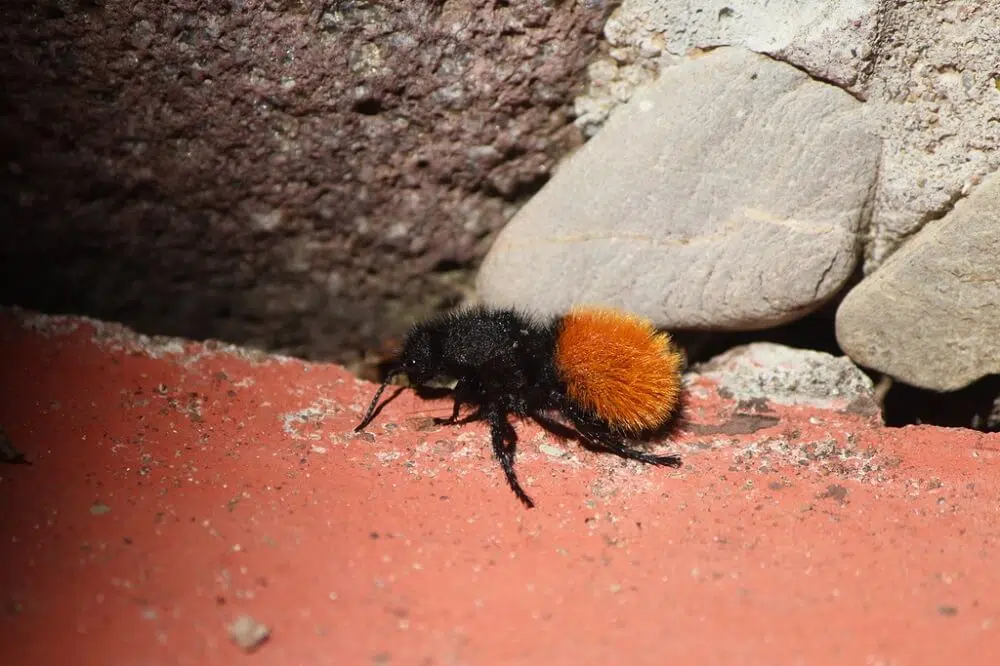
This velvet furry-looking ant (Dasymutilla klugii) is commonly found in Texas and across Southern states.
It has a black body with a red or orange gaster. The species is differentiated from other velvet ants by its habitat and shape.
Its head is narrower than the body. This species is also found in more Southern states compared to most other velvet ants.
These parasitic ants are wingless. They can be seen during the day but they tend not to be aggressive towards people even when they make it indoors.
8. New York Carpenter Ant
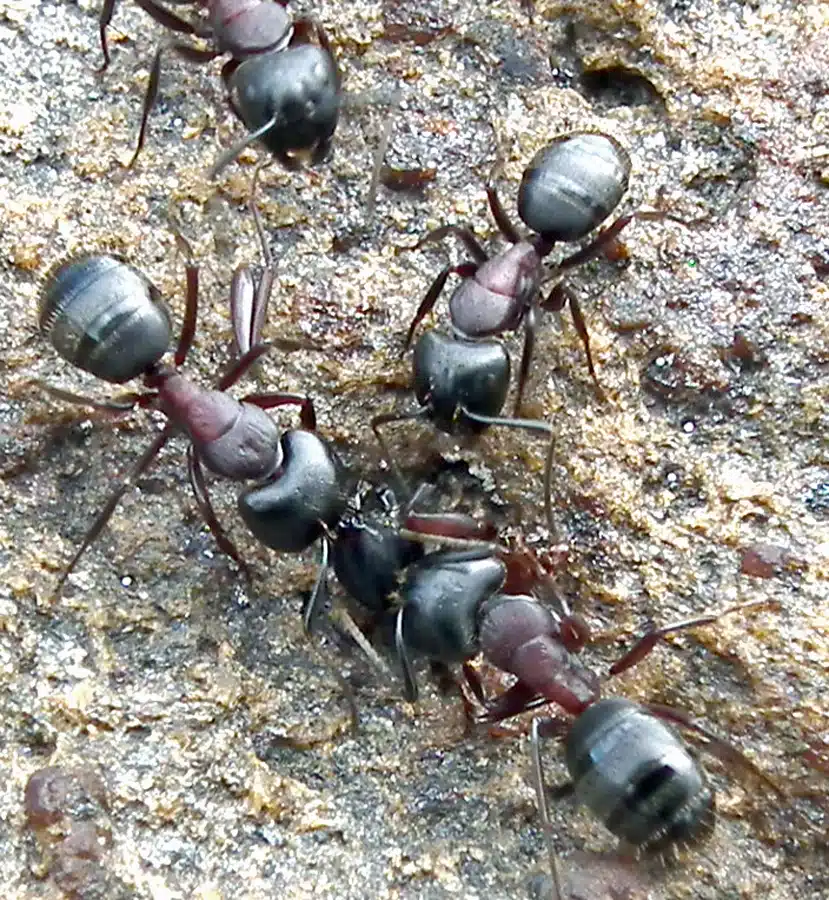
The New York Carpenter ant (Camponotus novaeboracensis) has a dark red color and a black color but it appears almost entirely black.
New York Carpenter ants can be found in wood, under stones, and even under cow dunk.
Ants of this genus are known to nest in wood, but without major damage, as they do not eat wood.
They tend to fly at the beginning of the summer. Flying New York Carpenter ants can be seen in June.
Since these ants have dark bodies it can be difficult to differentiate males from females. In most locations, the female New York Carpenter ant is identified by its wider head.
9. Four-spotted Velvet Ant
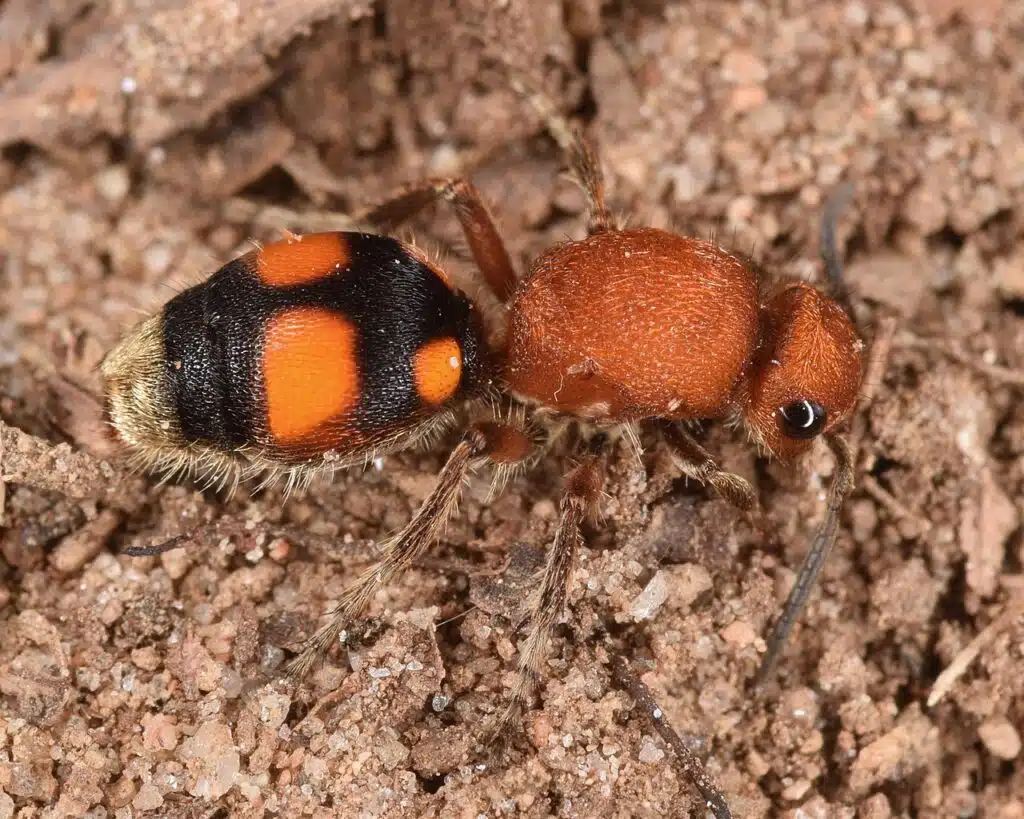
The Four-spotted Velvet ant (Dasymutilla quadriguttata) is a type of wasp that has black, red, and orange coloring.
Its fuzzy appearance is specific to velvet ants but there are differences in how this species move and live according to gender.
Male Four-spotted Velvet ants are known for their capacity to fly. They fly similarly to wasps.
Females don’t have wings. They simply move around like ants on the ground.
However, it’s the female Four-spotted Velvet ant you need to stay away from.
This wingless ant has a very painful sting. The pain associated with its sting can last hours.
10. Pseudomethoca simillima
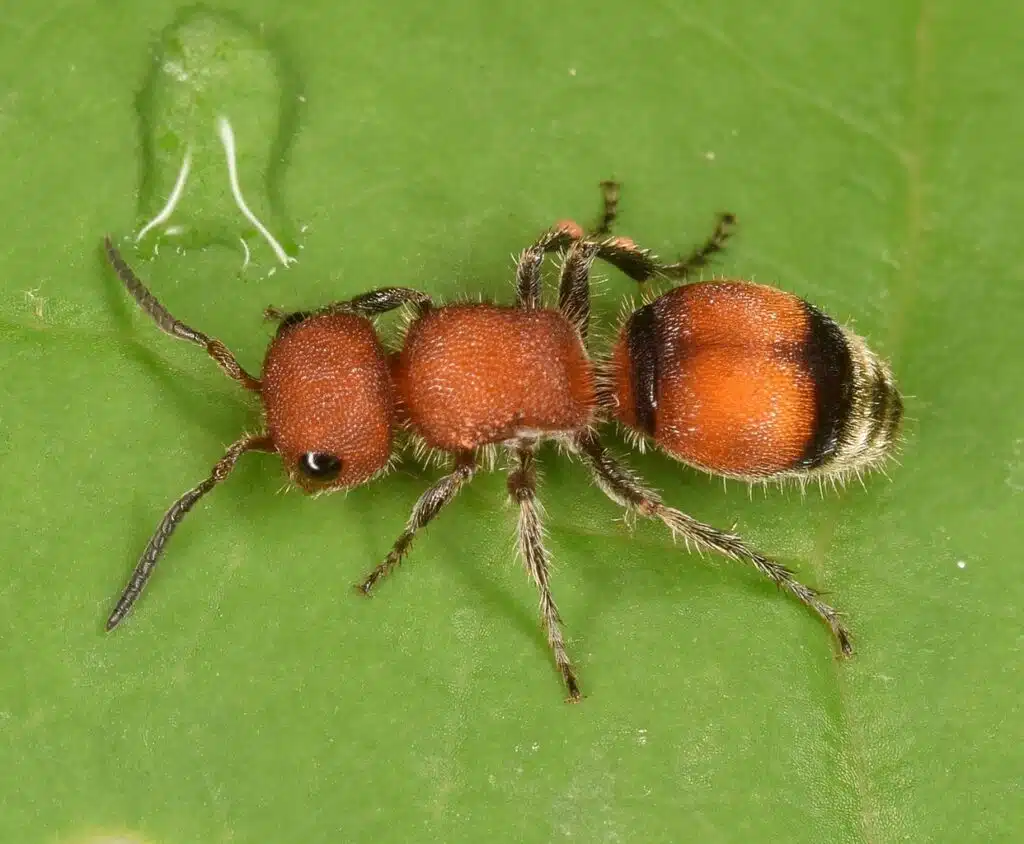
Growing to a size of up to 10mm, the small species of ants are known for its red-orange color with black margins along the body.
These ants can also have white or silver stripes. Their legs are black.
Common in sandy and arid terrains next to water, these ants are known for their wasp-mimicking behavior.
They move quickly and they flee whenever they see humans.
11. Southern Fire Ant
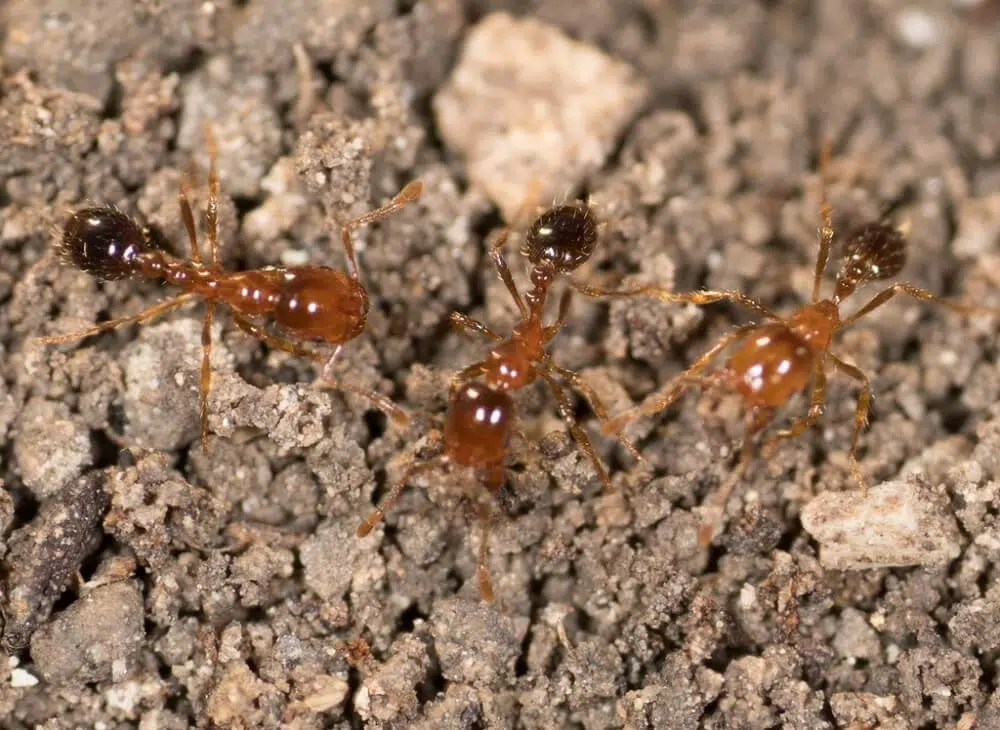
This ant (Solenopsis xyloni) is native to Southern US. The species is known for its painful sting.
Ants of this genus have a sting pain level compared to that of the Red Imported Fire Ant.
Southern Fire Ants are opportunistic harvesters. They have a complex and varied diet as they can survive on almost any type of seeds and fruits they find.
These ants often steal pollen from other species as well.
Found in sandy areas, these ants are also common in gardens and lawns that aren’t frequently irrigated.
Around homes and in suburban areas the Southern Fire ant is mainly known for its gathering of nuts and seeds.
12. Allegheny Mound Ant
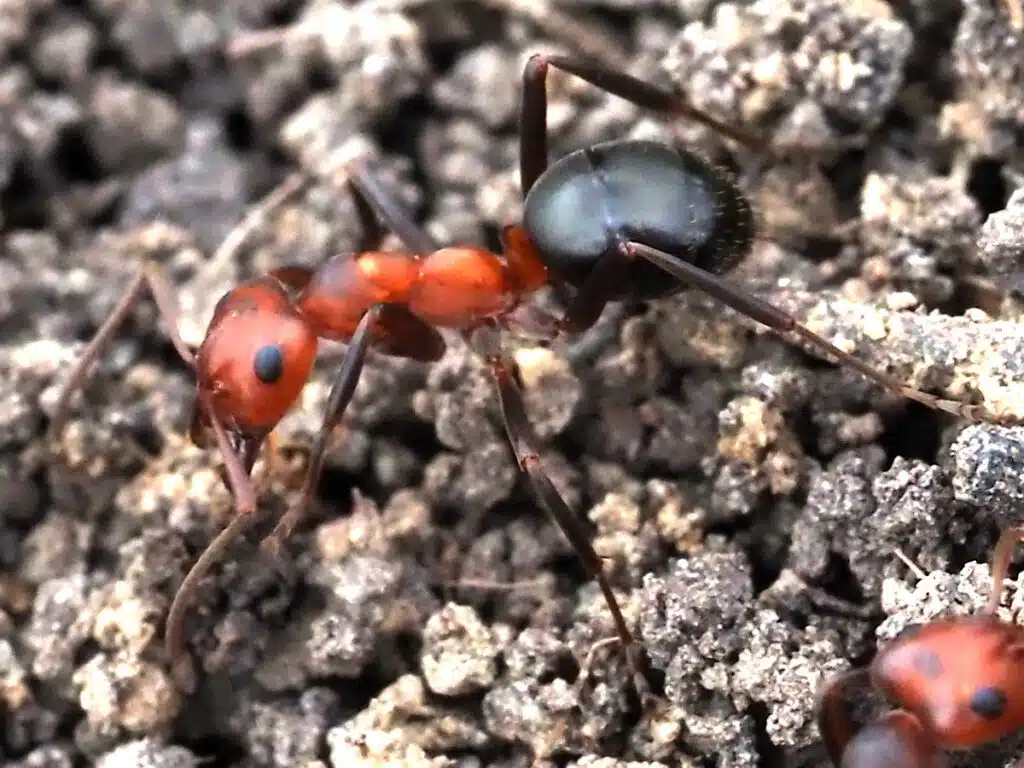
The Allegheny Mound ant (Formica exsectoides) has a red or brown main color with a black gaster.
Ants of this genus aren’t good signs as they create tall mounds. The heat coming directly from the sun is needed for the ant mound.
This is why these ants need to clear grass and vegetation to erect mounds.
They inject formic acid into plants to kill them just to clear out a space for an ant mound.
Feeding on honeydew from aphids, these ants are common in vegetable and herb gardens.
They can be found in the mound during the night and sometimes during the day.
Eggs and larvae of the species are mostly found in ant mounds as they get sufficient sunlight and act as small incubators.
13. Texas Carpenter Ant
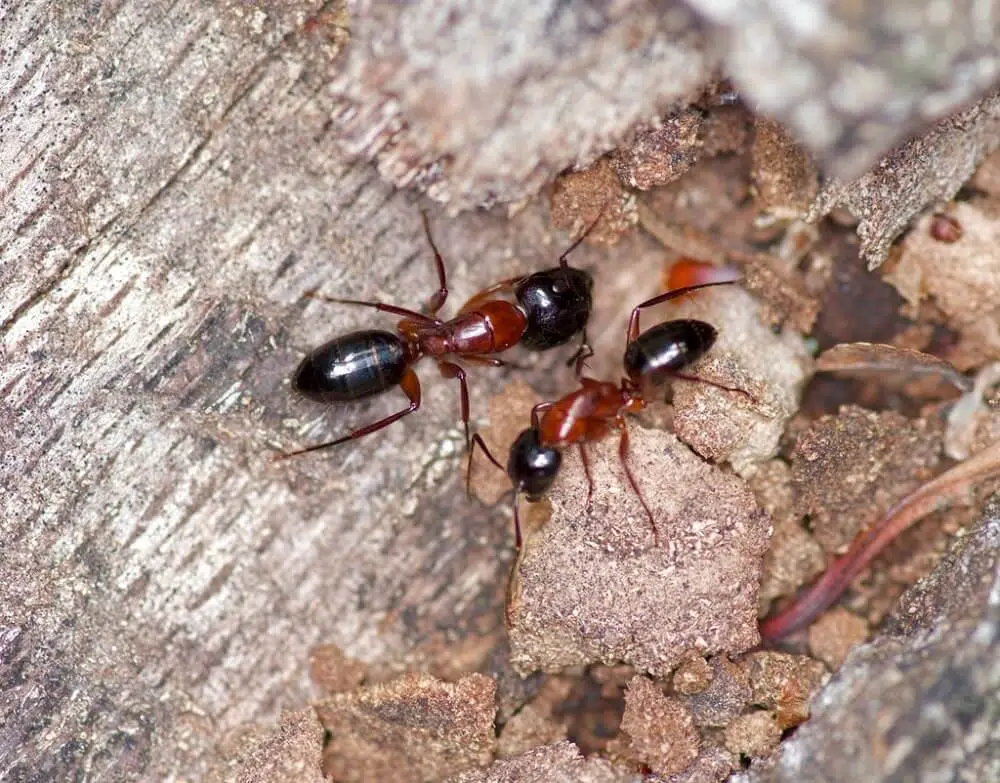
The Texas Carpenter ant (Camponotus texanus) has a red-brown color and dark brown to black coloring on the head and gaster.
This bicolored specimen is known to nest in wood. It can be found in trees, logs, and homes.
Texas Carpenter ants can be quite large, growing to a size of up to 13mm. Worker Texas Carpenter ants can grow to a size similar to the queen.
These strong ants are capable of chewing through large amounts of wood together.
Working in groups, they can establish large ant colonies over the years.
Up to a few thousand Texas Carpenter ants can live in a single colony.
14. Bicolored Pennant Ant
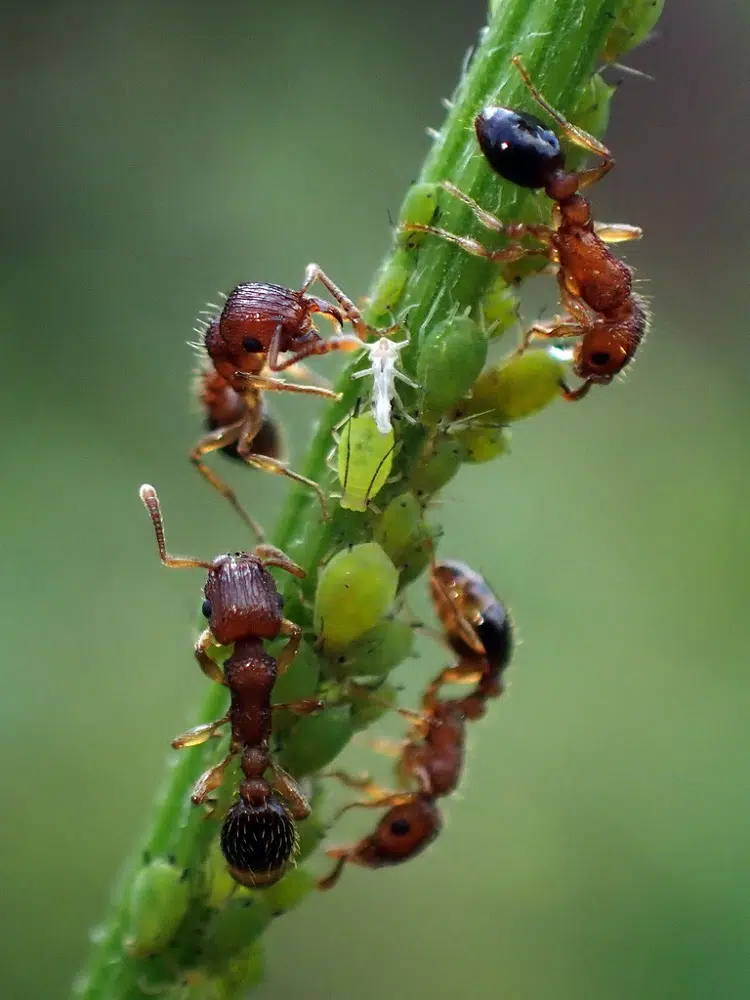
Bicolored Pennant ants (Tetramorium bicarinatum) have a red-brown body and a black abdomen.
This species is one of the most widespread ants around the world. It can be found in North America, South America, Europe, Asia, and Australia.
The ant lives in loose soil and under rocks or large stones.
Feeding on invasive bugs, these ants are often found in gardens. It’s best to avoid Bicolored Pennant ants as they can sting.
15. Deceptive Carpenter Ant
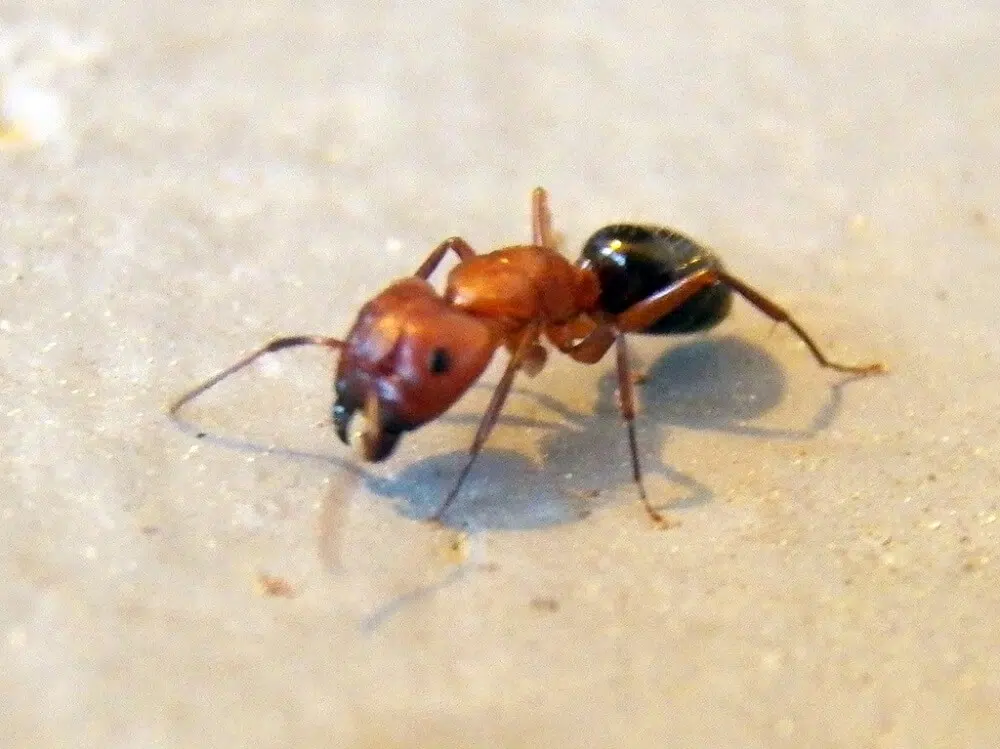
Deceptive Carpenter ants (Camponotus decipiens) have a bicolored body.
They have red and black coloring. Red is dominating while black is only seen on the abdomen.
Ants of the genus also have short white hairs on their black abdomens.
Common in Southeastern US, the Deceptive Carpenter ant likes arid climates. It’s accustomed to living in the wood, especially in softwood.
16. Bicolored Pyramid Ant
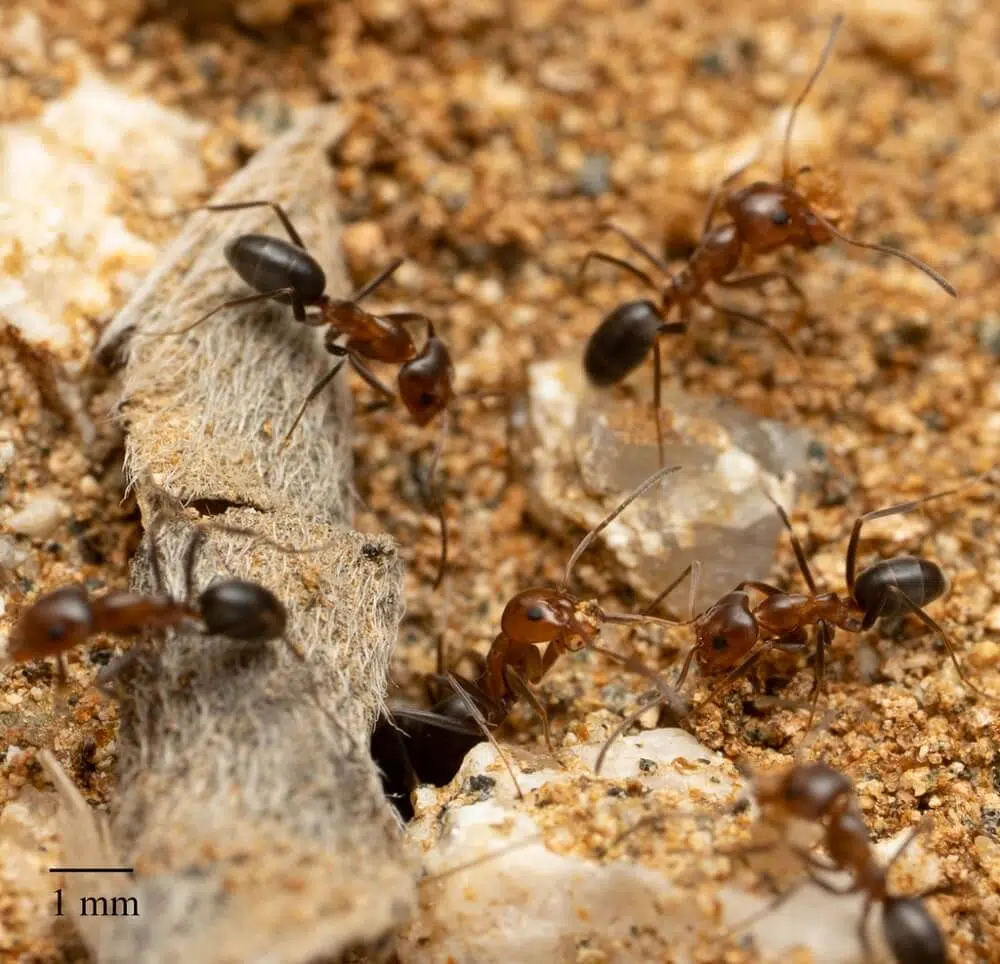
The Bicolored Pyramid ant (Dorymyrmex bicolor) has a black gaster and a red body.
It lives in Southwestern habitats and is known for being one of the black and red ants that eats both living and dead insects.
It feeds on honeydew produced by insects as well.
These ants live in air climates resembling deserts. They are adapted to living in all conditions, however.
Bicolored Pyramid ants can affect the germination process on crops and they need to be removed together with the plant bugs they eat.
17. Camponotus sansabeanus
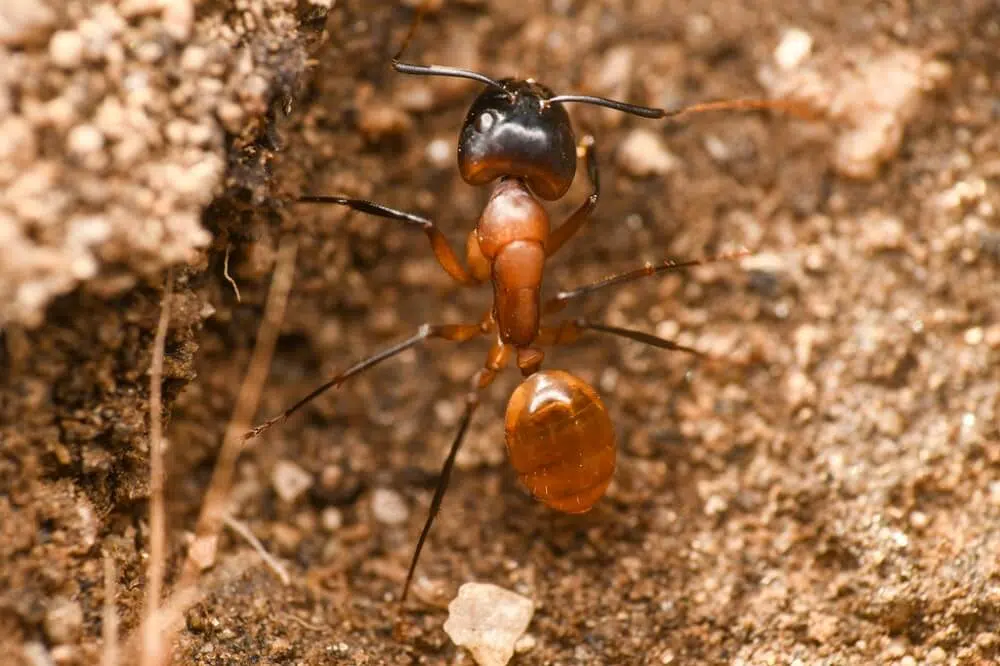
These bicolored ants have an atypical body appearance. It’s the thorax that’s black while the gaster is orange-red.
These ants grow up to 13mm and are also known for their strength.
A wide diet is the result of their high strength. These ants eat flies and mosquitoes alongside other bugs.
While they can eat fruit, these ants are adapted to eating a wide range of insects.
Their varied diet is based on the poor food availability in the deserts they live in.
Ants of this genus are nocturnal as they avoid the high desert heat of the day.
18. Snelling’s Carpenter Ant
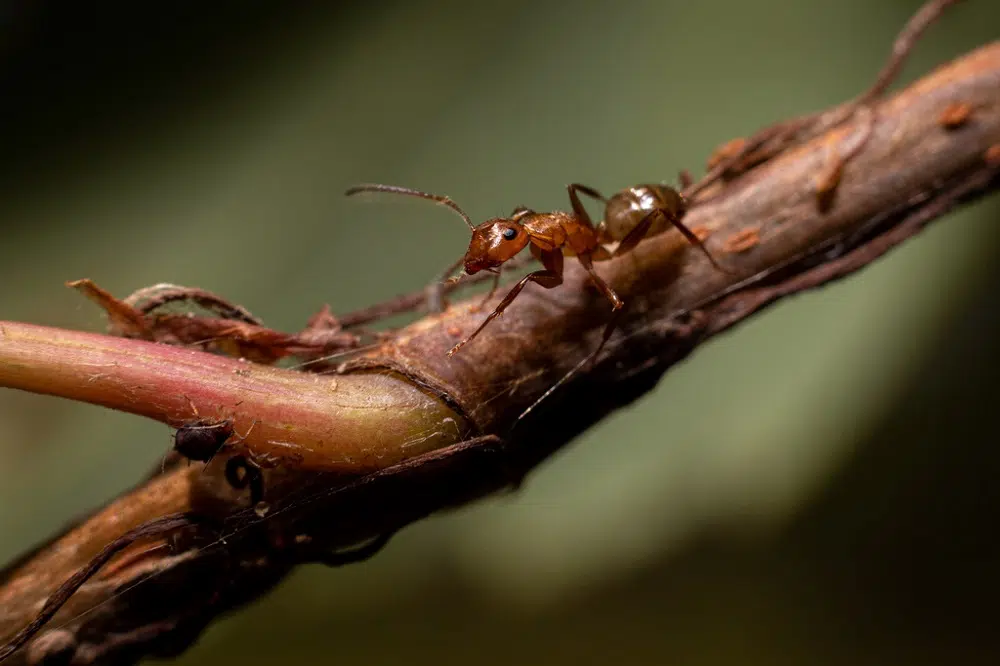
These social ants (Camponotus snellingi) establish in colonies led by a queen.
Identification is based on a red body with a black abdomen. The wings are yellow.
Ants of the genus are most common in Florida.
They are also native to Louisiana, Mississippi, Alabama, and Georgia. It can also be found in remote locations in Texas, South Carolina, and North Carolina.
19. Vinegar Ant
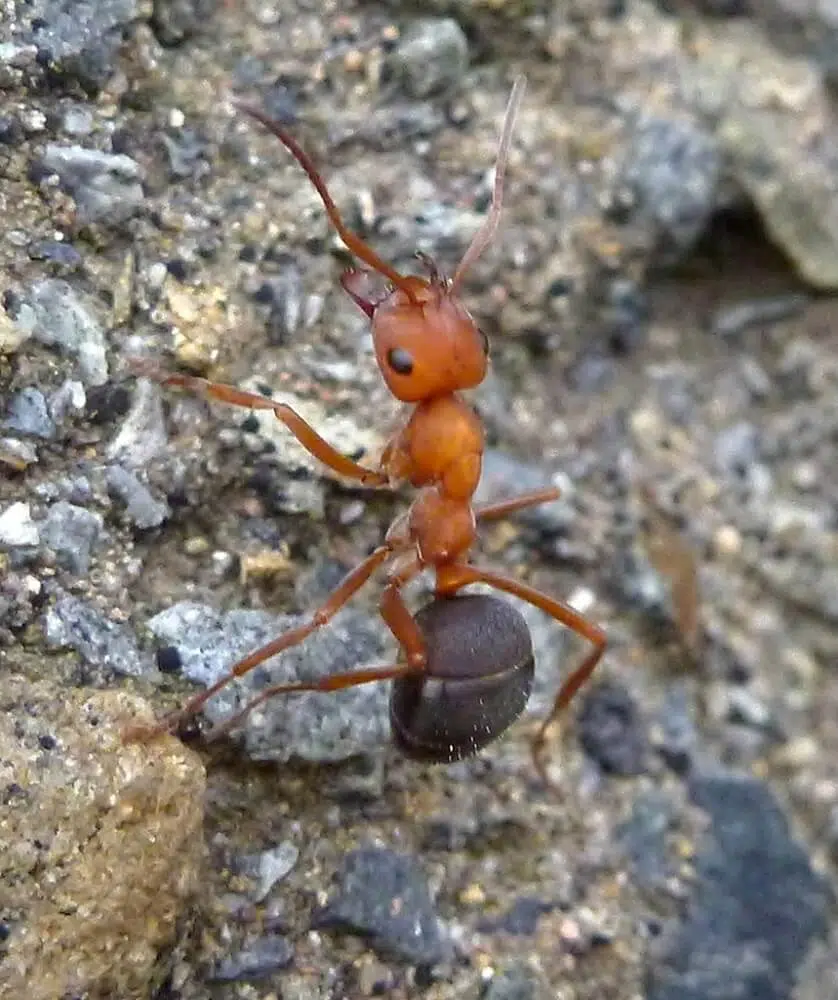
Female Vinegar ants (Formica integroides) have a bicolored red-brown and black body while males are almost completely black.
Native to Southwestern US, Vinegar ants are mostly found in woodlands, next to woodlands, and in open areas of woodlands.
A high number of Vinegar ant colonies can be found in Sierra Nevada.